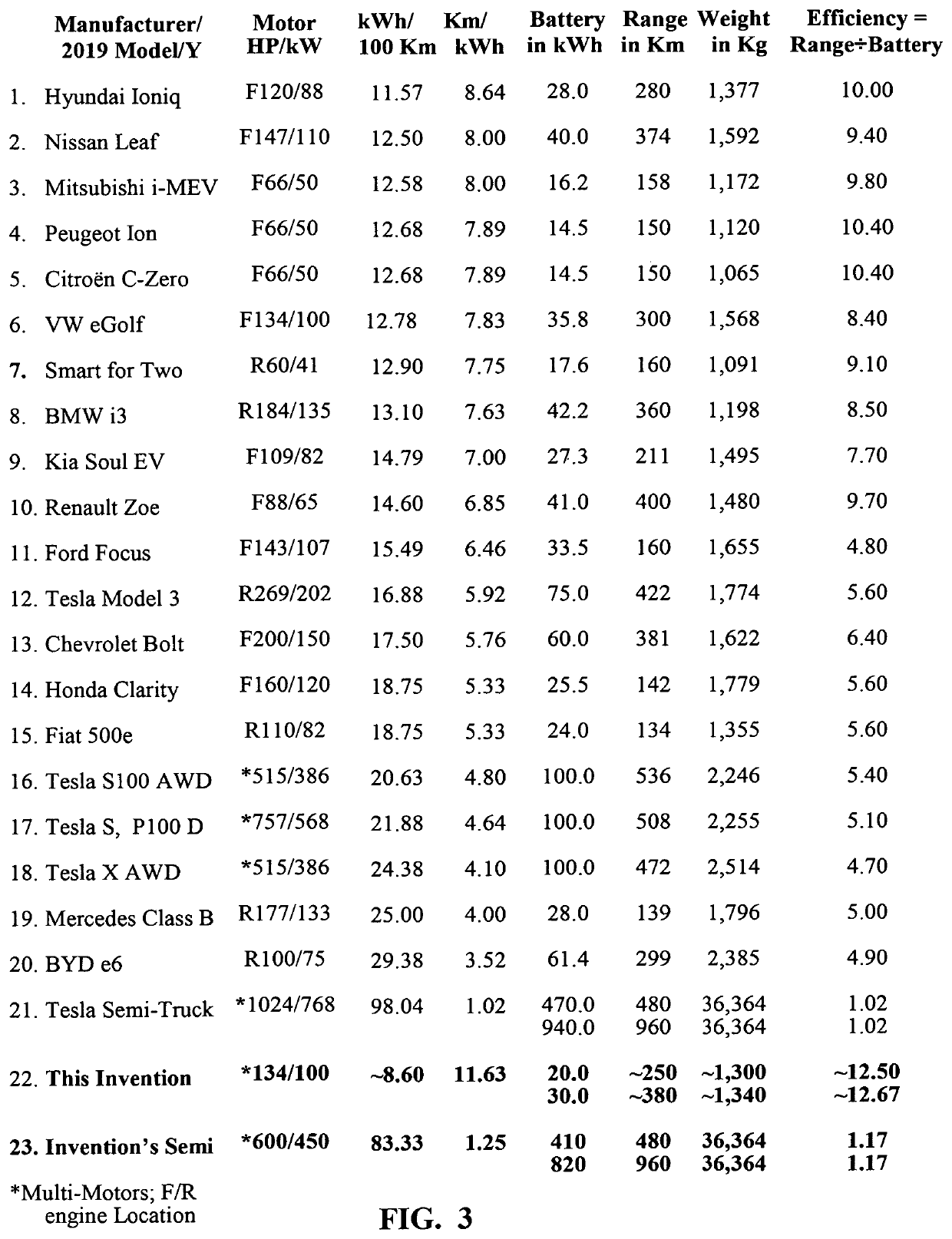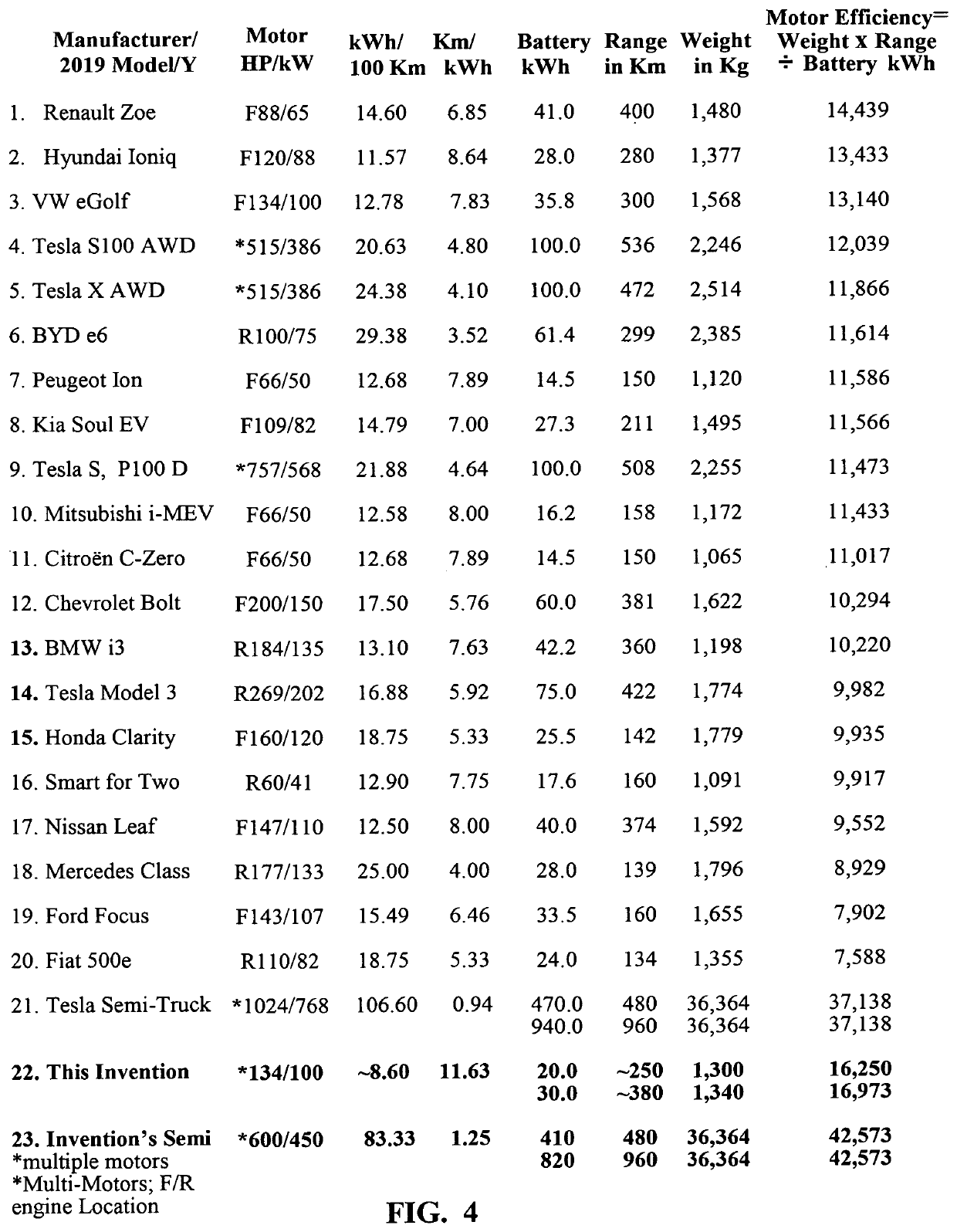Level-Five AVs collapses traditional steering value chains by rendering mechanical linkages and steering wheels redundant.
First, once a vehicles starts to operate without a driver, steering systems will expect to cater loss-of-assist mitigation in order to provide a
safety net as and when the EPS power-pack fails to provide assist for steering the vehicle. This will therefore force steering suppliers to migrate from
fail safe systems1 to fail operational systems for steering. However, the major stumbling block for the steering suppliers is NHTSA [National Highway Transportation and Safety Administration] regulatory compliance, which manufacturer are expecting some modifications to accommodate AVs steering functionality. This disclosure's integrated propulsion and steering concept should be adopted in future technology of choice because:(i) there is no other effective mechanical solution for AV's steering; and(ii) it triggers the abolition of EPS and all conventional, mechanical steering gears below the driver's steering-wheel. 1A fail-safe or fail-secure device is one that, in the event of a specific type of failure, responds in a way that will cause no harm, or at least a minimum of harm, to other devices or to personnel.
Yet, the “end-product” of multi-billion-dollar AV-research, translates the ‘environment
perception’ into the old, traditional mechanical controlled propulsion and steering, does not make sense.
Unfortunately, the current EV manufacturers are continuing the ‘one power source’ doctrine since the majority of EVs are manufactured with only one electro-mechanical device coupled to several mechanical gears to propel only two wheels; and independently, a mechanical steering systems, steers only the front wheels with the traditional
electric power-steering (EPS).
The bad-news is that many million-jobs in the industry will become redundant, for the “moving-parts” that won't be manufactured.
It is obvious that propelling the wheels with one
system and steering the same wheels with another is an imperfect arrangement, especially when it is carried out by mechanical means. FIG. 1 presents two separate systems—at the top the vehicle propulsion, and at the bottom is an
electric power-steering (EPS),—that differentiate in their assignment, but then with lack of integration between them.
The theory of healthy
integrated systems is when systems complete each other, which contributes to an incomparable vehicle handling and stability that could not be achieved when the systems are not integrated.
Diesel engines in trucks, semi-trucks and buses are to become obsolete for the extensive
pollution of
NOx and CO2 emission and
respiratory health detriments.
The damage to the environment and the expenditure of health-care will always exceed by far the unsupported claims of the trucking industry that manufacturing and operating electric semi-trailer is much more expensive than diesel.
Yet, the three vehicles are relatively very sluggish since they need in average 15 seconds to travel from zero to 60 mph.
The
proximate conclusion: adding kWh to battery-packs, and increasing the power-
train HP will extend the distance traveled; increase the pep, but at the same time it also increases the vehicle weight, the manufacturing cost, and dramatically reduce the
overall efficiency.
There is huge gulf in opinions about EVs design among manufacturers.
Most of them believe that battery technology is the only factor to be improved and the rest of the EV has to be manufactured with the same, traditional die-
cutting because, they refuse to accept the fact that EV manufacturing is eventually going to evolve as merely a computer with wheels.
Both culture and behavior can change quickly for the following reasons:(i) Because automobile personal ownership is a very bad investment since it is in use less than 10% of the time; automobile ownership is expected to decline dramatically also because the world
population is moving into cities, leading to enhancement of car-sharing programs.
Empirical tests prove that fast-charging procedures—which is expected to be the MO—will shorten battery life.
The monopoly—especially when China logged 60% of global EV sales [according to Bloomberg]—will skyrocket prices to levels that would lead to dis-economy.
Unfortunately, drive-
train design in most EVs listed in FIGS. 3 and 4 is inherited from vehicles with IC engines because today's EVs are assembled by manufacturers who assembled IC engine vehicles for decades with design concept of: “one power source does it all.” The single power source is usually paired with a gearbox [most EVs use a single
gear transmission], then connected to a mechanical differential that transfers power to the wheels with two or four drive-shafts.
Yet, synchronous motors have many “side effects” and high price that diminishes their efficiency issues.
Synchronous-motors are very expensive; they overheat, which calls for an extensive water-cooling
system, especially with 175 to 200 HP and larger motors.
Torque ripple and rotor
skew produces annoying vibrations, similar to the annoying vibrations in high compression IC engines.
Manufacturing synchronous motors with
Neodymium is very expensive, and dependable on monopolized supply, which could lead to dis-economy.
The process is reducing or increasing the
voltage to the AC terminals and at the same time lowering or elevating the current to bring the motor to operate within ‘High-Efficiency Range.’ Unfortunately, IMC provides limited efficiency improvement for a single electro-
mechanical devices because, for substantial part of traveled-time, EVs are operating under
low load conditions; and Electro-mechanical devices operate inefficient at low and at high angular speed (RPM).
The same problem take place at low
power output levels, e.g. below 30% rated load and beyond the point of ‘break-down torque.’ Design and mechanical limitations of electro-mechanical device cannot be resolved merely by electronic means.
A sophisticated IMCs designed and equipped with all electronic gadgets could not possibly maintain efficient propulsion with a single electro-mechanical device through all driving
modes; in every possible vehicle speed, and load situation.
However, the Cheetah's precise operation is different than horse galloping that put into motion one Pedi at a time.
It took engineers many decades to realize that running power-steering pump all the time is extremely inefficient.
Aerodynamics is a vehicle design issue—in particular, but not limited to the frontal area—which is not a part of this disclosure.
The industry world-wide utilizes almost only
electric power; and therefore, IC engines numbers in the industry are fractional because of their narrow torque output, narrow efficiency range, low durability and cost for having multiple
moving parts in all directions.
Yet, the wider range of efficiency in electro-mechanical devices is not enough to operate an EV with a single electro-mechanical device because it cannot operate efficiently without a transmission across the range of zero to 90 mph and under variable loads.
However, the two motors are not equipped with de-
coupling mechanism, and therefore they consume energy all the time when the vehicle is in motion, while the subject disclosure engages only these electro-mechanical propulsion devices that will deliver the best efficiency results.
In consideration of the relatively
low load consumption during driving in real world environment, most driving-
modes after start are not within the optimum efficiency range, especially when a single electro-mechanical device is utilized.
The
scenario of mechanical steering inefficiency is unaccounted for in
dynamo-meter testing because during turning procedures, on the road, three tires are dragged to different degrees, especially the two rear ones, and especially in short-radii turns.
The energy lost in mechanical steering affects EVs efficiency the same way it affects IC engine vehicles, which dramatically curtails the
driving range; and, wheel dragging diminishes
life expectancy of tires.
AWD systems that greatly improve
vehicle dynamics were manufactured in limited numbers for their economic expense, and massive
mechanical components that caused the vehicle to ‘
gain weight,’ and the need for bigger engines.
However, AWD systems faded away, for being heavy, costly and inefficient.
However, after the first few seconds, when sufficient
kinetic energy is delivered, electro-mechanical devices cannot be disconnected to keep propulsion within ‘high-efficiency range’ as depict in FIGS. 8 and 9 because there are no decoupling mechanisms available; and(ii) constructing an EV with only two or four electro-mechanical devices, e.g. one or two pairs of electro-mechanical devices, is not desirable because, FIG. 10 will then display only one or two traces instead of four.
Yet, the motor will perform very inefficient in low and high-speed ranges.
The motor will also require much larger investment such as:
synchronous motor with all attachments and higher maintenance costs; and the motors are attached to the wheels at all times, which is inefficient.
However, this ‘Quattro’ system (FIG. 23) is expensive, is a enumerate-elements piece of equipment, consisting of: control units, sensors and much more.
The electric rear is only engineered to reduce emission during EPA
dynamometer low-speed
driving test to obtain better MPG Sticker because, typical mechanical AWD vehicles maintain unfavorable emission and MPG ratings, which is most of the time above federal CAFE standards.
Unfortunately, the same design dominates the automobile industry to this day, including the EVs listed in FIGS. 3 and 4. FIG. 26 is a
layout of AW steering, which applies to the subject disclosure.
The driver has his vehicle under control over the
steering wheel, and he can tear around in extreme situations.
Safety concerns have slowed the adoption of drive-by-wire technologies.
However, time have changed because the automobile industry is experiencing technological transition never materialized in such a degree since 1885.
It did not materialize, which makes NHTSA's arguments that “by wire” is unsafe without merit; considering steer-by-wire—approved by FAA—is the norm in
aviation for decades.
 Login to View More
Login to View More  Login to View More
Login to View More 


